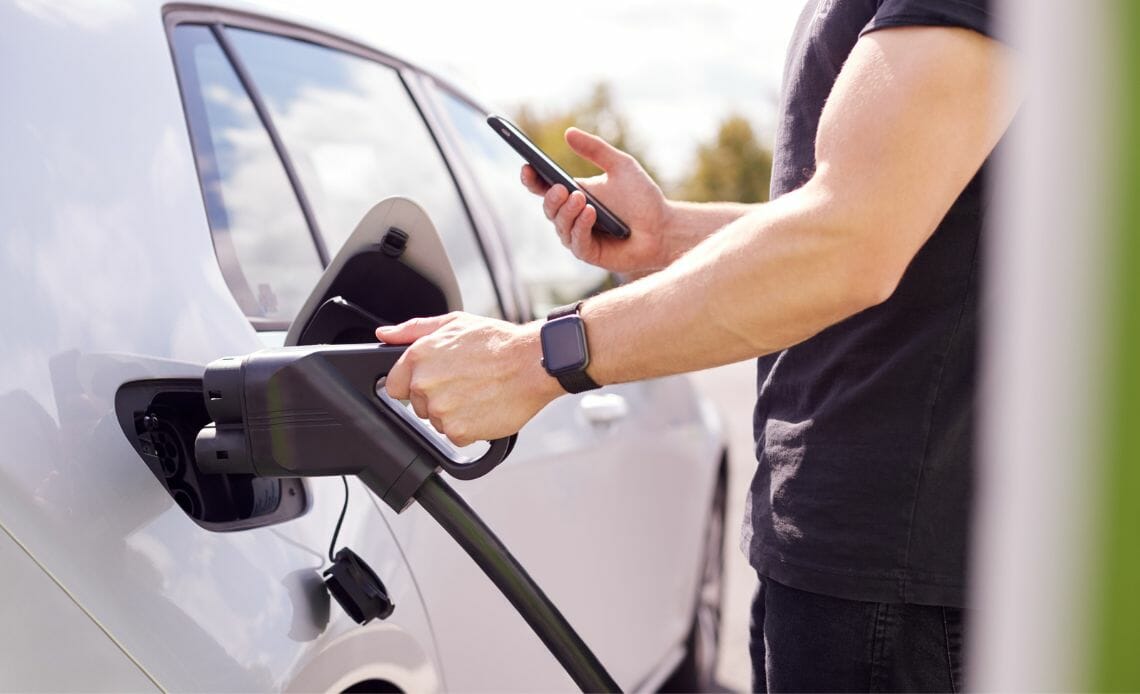
In a world grappling with the environmental consequences of traditional transportation, the emergence of plug-in hybrid electric vehicles (PHEVs) brings hope. PHEVs seamlessly combine the power of electric and internal combustion engines, providing an efficient, eco-friendly, and cost-effective alternative to conventional gasoline-powered cars.
Table of Contents
What is a PHEV?
PHEVs, plug-in hybrid electric vehicles, represent a harmonious blend of electric motors and internal combustion engines (ICE). Integrating a rechargeable battery pack that can be juiced up from an external power source allows PHEVs to run on pure electric power or utilize the ICE when needed, granting drivers the freedom of choice.
How Does a PHEV Work?
Picture this: a PHEV gracefully dances between electricity and gasoline, orchestrating a symphony of efficiency. When fully charged, a PHEV confidently cruises using electricity, typically covering 20 to 50 miles depending on the model. Once the battery power wanes, the PHEV gracefully transitions to its trusty internal combustion engine, ensuring uninterrupted journeys with no range of anxiety.
Advantages of PHEVs
Why settle for one when you can have the best of both worlds? PHEVs offer a multitude of advantages over their conventional counterparts. Firstly, their dual powertrain system endows drivers with unparalleled flexibility, enabling them to seamlessly switch between electric and hybrid modes based on their needs and the availability of charging infrastructure. Goodbye range anxiety, hello smooth transitions!
Secondly, PHEVs champion the cause of sustainability, significantly reducing greenhouse gas emissions compared to conventional vehicles. PHEVs emit zero tailpipe emissions in their electric mode, enhancing air quality and lowering carbon footprints. Even in hybrid mode, PHEVs emit fewer pollutants than traditional cars, creating a healthier environment.
Thirdly, PHEVs deliver remarkable fuel efficiency. By harnessing electric power for shorter trips, PHEVs gracefully reduce reliance on gasoline, leading to substantial fuel savings over time. This irresistible proposition makes PHEVs an attractive choice for eco-conscious individuals and those aiming to reduce fuel expenses.
Environmental Benefits of PHEVs
PHEVs are true warriors in the battle against climate change and air pollution. By championing electricity as the primary source of propulsion, these vehicles significantly diminish the reliance on fossil fuels, thereby mitigating the adverse effects of carbon emissions. The result? A cleaner, greener world that future generations can call home.
Moreover, PHEVs lend a helping hand in the pursuit of cleaner air. They emit zero tailpipe emissions in their electric mode, reducing harmful pollutants such as nitrogen oxides (NOx) and particulate matter (PM). Imagine bustling urban areas with fresher air, fewer respiratory illnesses, and a healthier populace. PHEVs turn this dream into a tangible reality.
Cost Savings with PHEVs
Investing in a PHEV can translate into substantial long-term cost savings. Although the initial purchase price may be slightly higher than conventional vehicles, the economic scales tip favor PHEVs thanks to reduced fuel costs. As PHEVs rely more on electric power and less on gasoline, owners can bid farewell to frequent visits to the pump and enjoy significant fuel savings over time.
Additionally, PHEV owners can tap into a world of tax incentives and government rebates. These financial incentives, coupled with regulatory support, alleviate the financial burden and make the prospect of owning a PHEV all the more appealing.
Charging Infrastructure for PHEVs
A robust charging infrastructure is pivotal in fostering the widespread adoption of PHEVs. Given their reliance on electricity, convenient and accessible charging stations are crucial. The good news is that the charging infrastructure for electric vehicles (EVs) is expanding remarkably, with public charging stations sprouting up in shopping malls, parking lots, and highways, like beacons of progress.
Moreover, many PHEV owners choose to install home charging stations, ensuring the convenience of overnight charging and a stress-free morning departure. Fusing public and home charging options lays the foundation for a seamless and harmonious charging experience.
PHEVs and Government Incentives
Governments worldwide have embraced the potential of PHEVs, implementing a myriad of incentives to propel their adoption. These incentives encompass tax credits, rebates, and even access to restricted traffic zones. By championing these measures, governments aim to accelerate the transition towards sustainable transportation and reduce reliance on fossil fuels.
Prospective PHEV owners should explore and understand the incentives available in their regions. Unlocking these incentives paves the way for substantial cost reductions, making PHEVs economically viable and attractive.
Popular PHEV Models
As the demand for PHEVs skyrockets, automobile manufacturers have introduced various models to cater to discerning consumers. Among the crème de la crème of PHEVs, you’ll find renowned names such as the Toyota Prius Prime, Chevrolet Volt, BMW i3 REx, Mitsubishi Outlander PHEV, and Volvo XC60 T8 Twin Engine. These models weave together exceptional performance, remarkable electric range, and outstanding fuel efficiency, captivating a wide spectrum of eager drivers.
Maintenance and Longevity of PHEVs
Maintaining a PHEV echoes the practices of conventional vehicle care, with a few additional considerations. PHEVs necessitate regular servicing of their internal combustion engines, encompassing oil changes and filter replacements. In addition, periodic checks of the battery pack are essential to ensure optimal performance and longevity.
Fortunately, advancements in battery technology have bestowed PHEV battery packs with durability and extended lifespan. Most manufacturers offer warranties for PHEV battery packs, offering owners peace of mind. By embracing proper maintenance and care, PHEV owners can revel in reliable and efficient performance that stands the test of time.
PHEVs and the Future of Transportation
PHEVs stand as vital trailblazers, charting a new course for the future of transportation. As the world steers towards sustainability and decarbonization, PHEVs provide a crucial bridge between the familiarity of internal combustion engines and the promise of electric mobility. PHEVs offer a smoother transition for consumers who may be hesitant to embrace fully electric vehicles, providing a versatile solution that combines the best of both worlds.
Furthermore, PHEVs complement other sustainable transportation modes, such as public transit and cycling. By offering an extended range and the flexibility of hybrid operation, PHEVs cater to longer journeys and areas with limited charging infrastructure. As the charging infrastructure expands and battery technology advances, PHEVs will become an even more appealing choice for environmentally conscious individuals seeking greener transportation options.
FAQs
Are PHEVs more expensive than conventional vehicles?
While the initial purchase price of a PHEV may be slightly higher than that of a conventional vehicle, the long-term fuel savings and potential government incentives can offset the initial investment, making PHEVs an economically viable choice.
How long does it take to charge a PHEV?
The charging time for a PHEV varies depending on factors such as battery capacity, charging equipment, and power source. Generally, a full charge using a standard home charging station takes a few hours, while fast-charging stations can provide a significant charge in as little as 30 minutes.
Can I drive a PHEV in electric-only mode?
Absolutely! PHEVs are designed to operate in electric-only mode as long as there is sufficient battery charge. The electric-only range varies depending on the model and battery capacity, allowing for emission-free journeys.
Do PHEVs require special maintenance?
While PHEVs require regular maintenance akin to conventional vehicles, such as servicing the internal combustion engine, they have additional considerations for the battery pack. Periodic checks are necessary to ensure optimal battery performance, longevity, and efficiency.
Are PHEVs suitable for long-distance driving?
Certainly! PHEVs are designed to cater to long-distance driving. With their hybrid mode, which seamlessly transitions to the internal combustion engine once the battery charge depletes, PHEVs offer extended range and the flexibility to travel longer distances without solely relying on electric power.
Conclusion
PHEVs herald a paradigm shift in sustainable transportation, addressing the pressing need for eco-friendly alternatives to conventional vehicles. By harnessing the power of electric and internal combustion engines, PHEVs offer flexibility, reduced emissions, and substantial cost savings. They champion environmental causes, enhance air quality, and contribute to a sustainable future. With the continued development of charging infrastructure and unwavering government support, PHEVs are poised to reshape the transportation landscape and lead us into a cleaner and greener future.
Also Read: From Dreams to Reality: The Genesis Motor Journey of Redefining Luxury Automobiles

